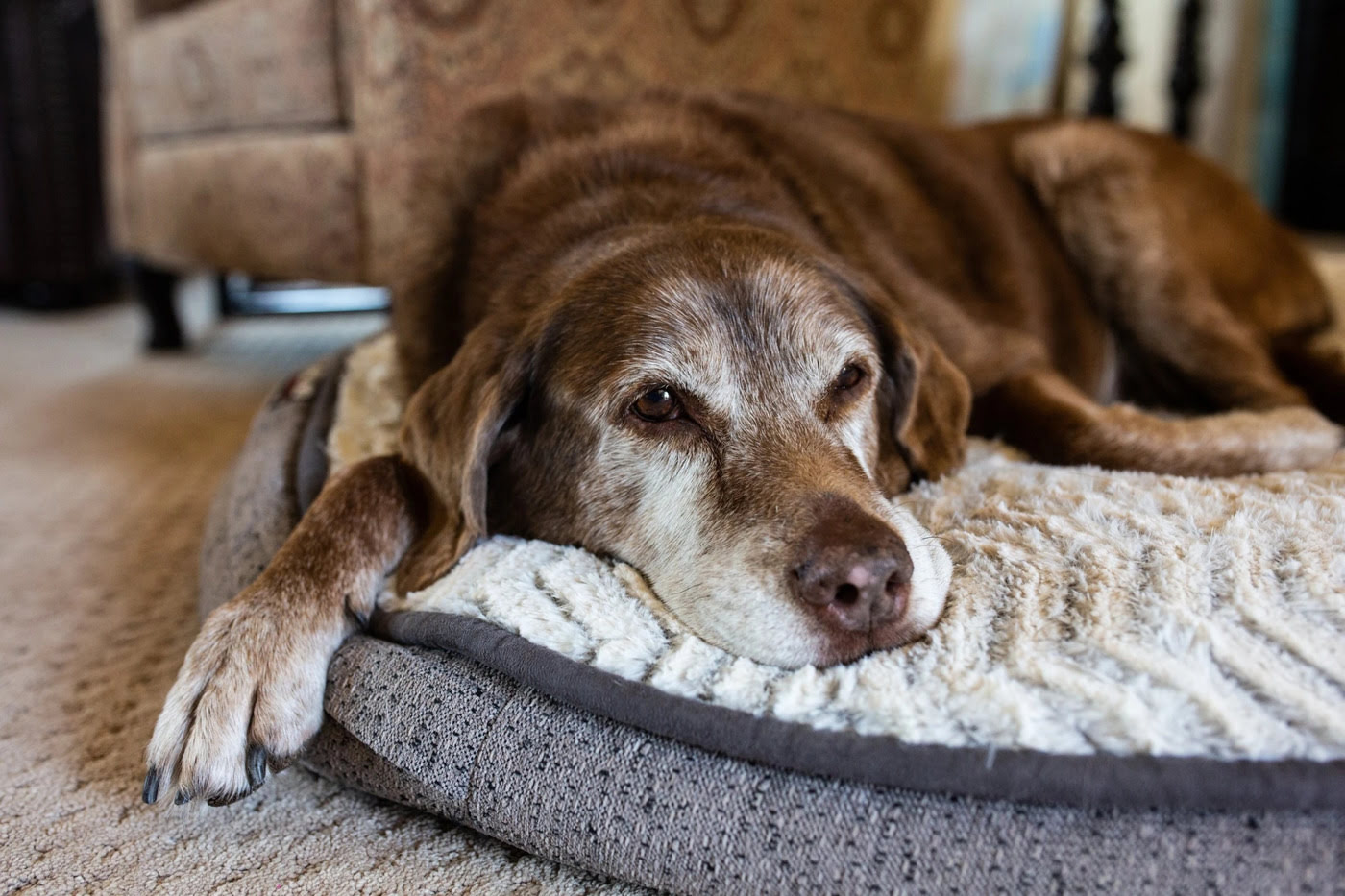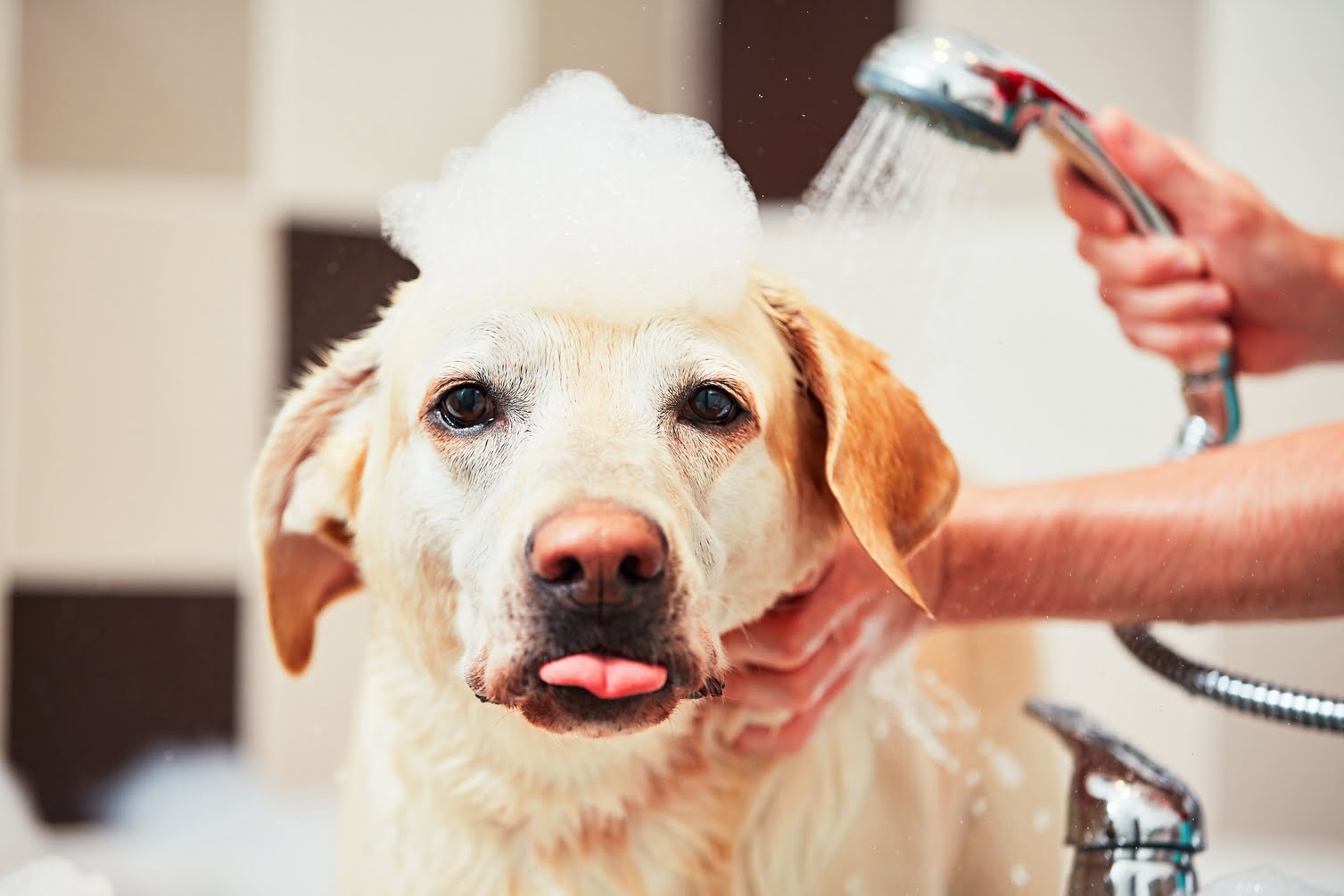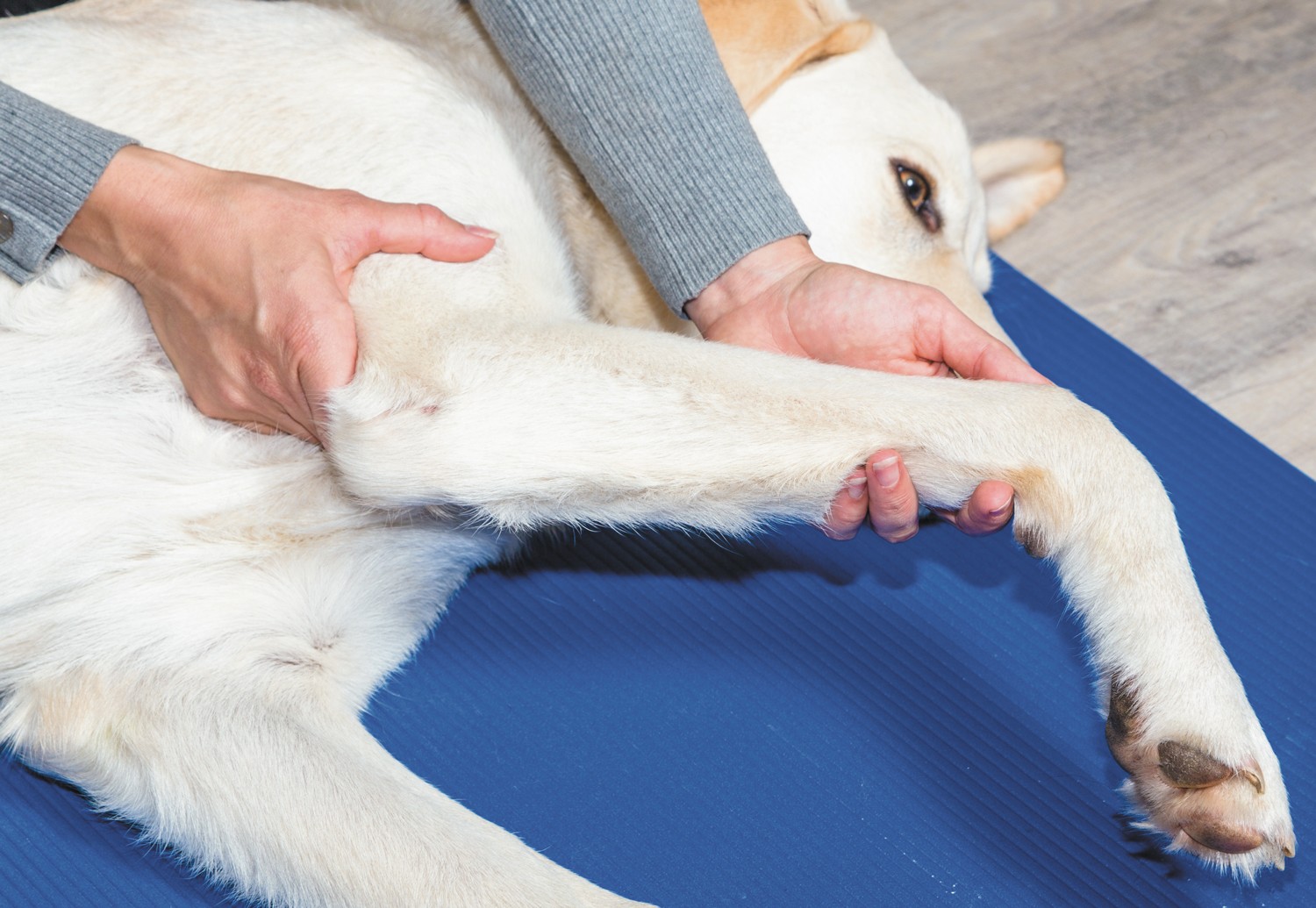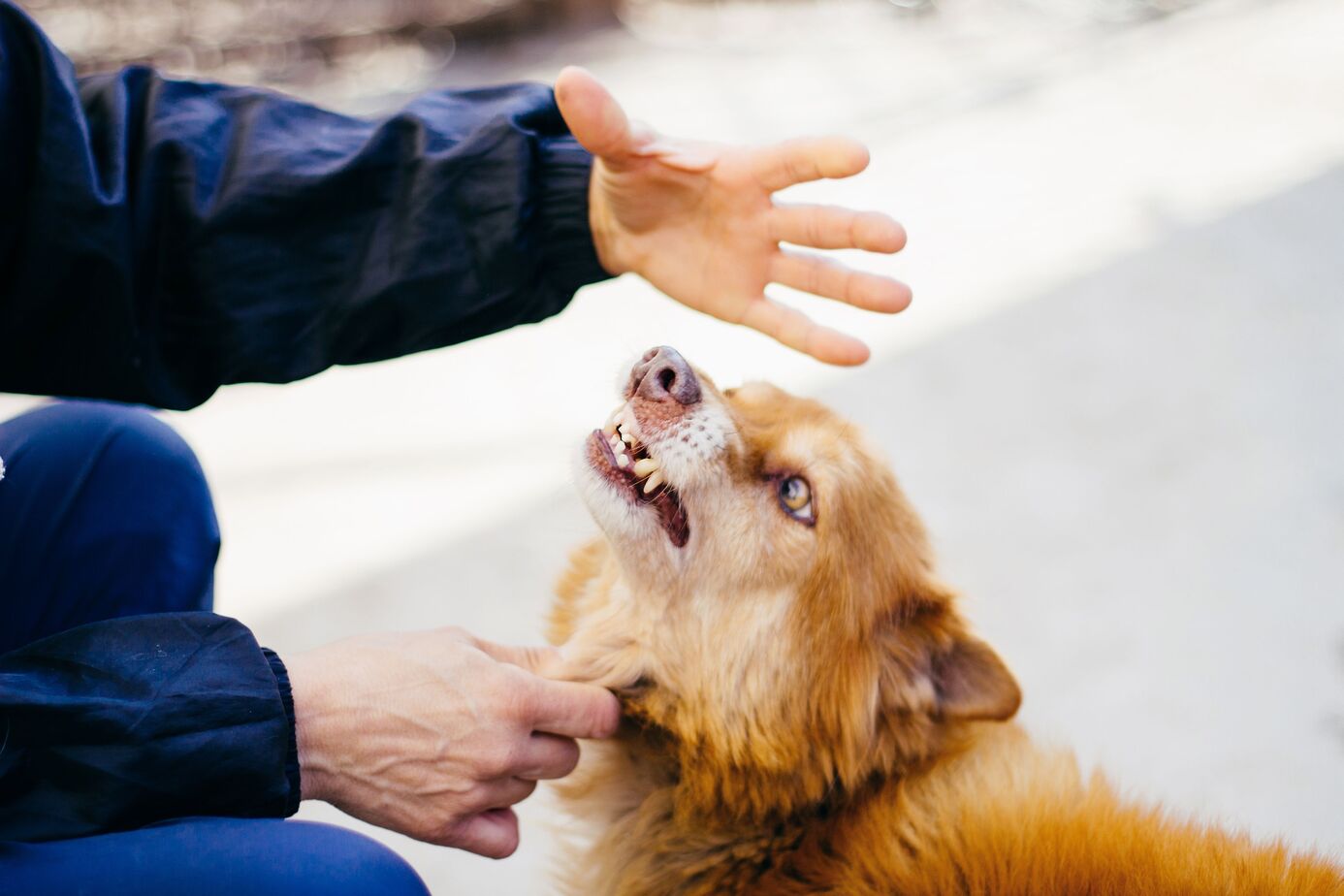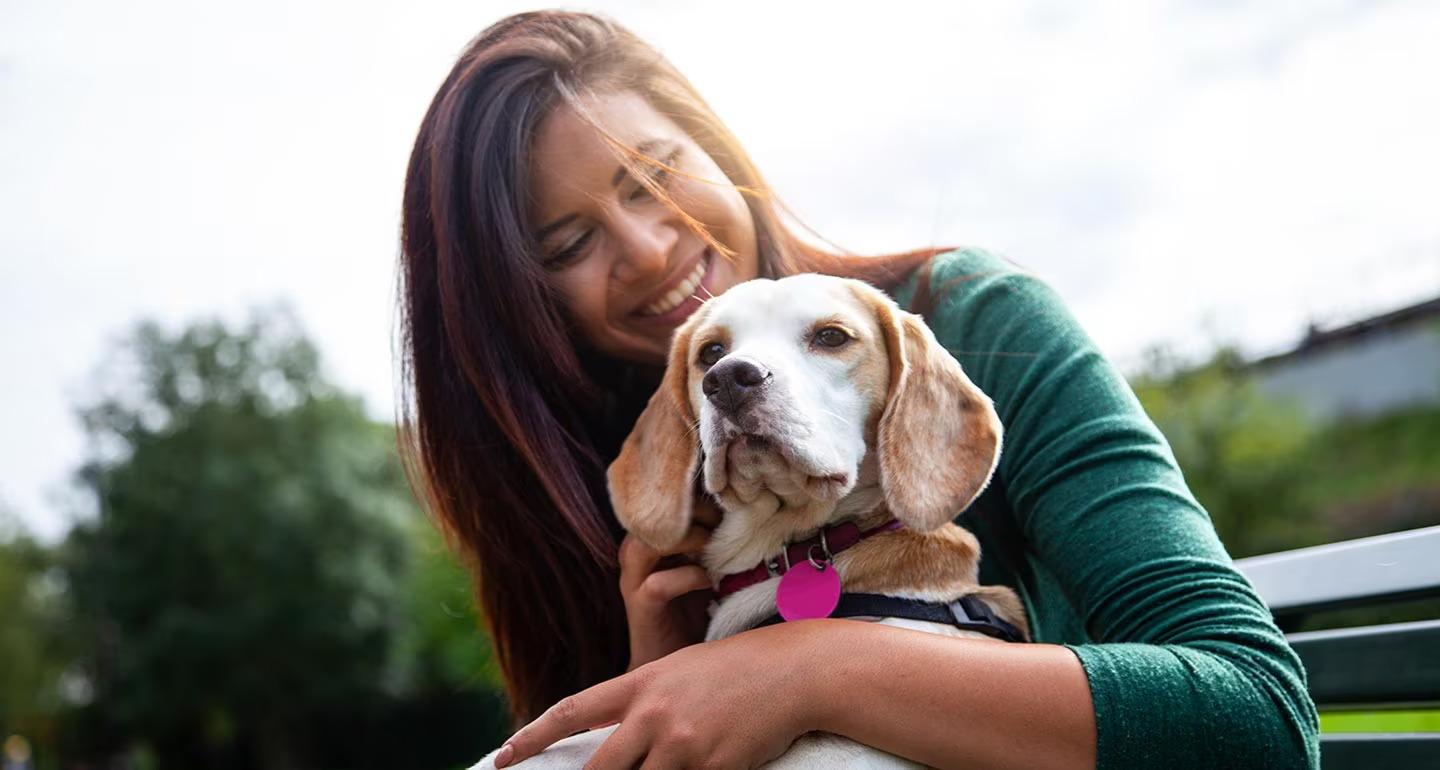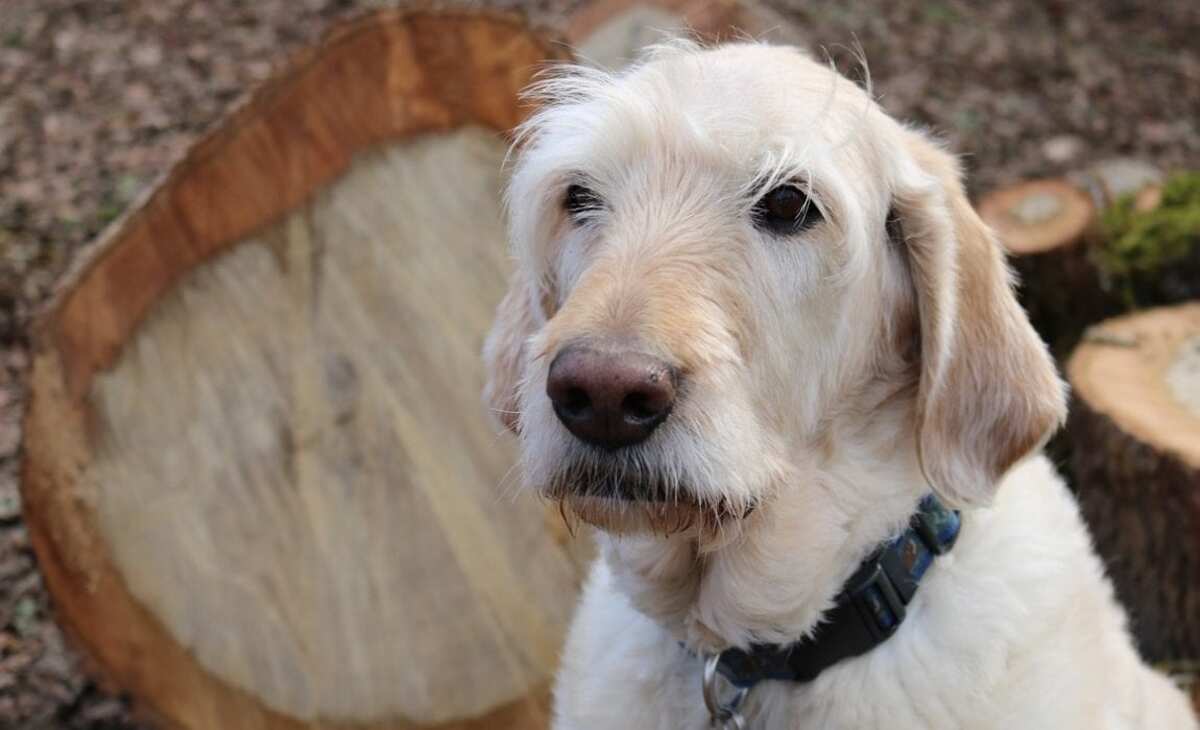Home>Health & Wellness>Behavior & Cognitive Care>How To Handle A Senior Dog That Is Blind, Deaf, And Has Lost The Ability To Smell


Behavior & Cognitive Care
How To Handle A Senior Dog That Is Blind, Deaf, And Has Lost The Ability To Smell
Published: February 1, 2024
Learn how to provide behavior and cognitive care for your senior dog that is blind, deaf, and has lost the ability to smell. Discover effective strategies to support your aging pet's unique needs.
(Many of the links in this article redirect to a specific reviewed product. Your purchase of these products through affiliate links helps to generate commission for Pawsomeoldies.com, at no extra cost. Learn more)
Table of Contents
Introduction
Caring for a senior dog is a deeply rewarding experience that often requires patience, empathy, and understanding. As our beloved canine companions age, they may encounter various health challenges that can significantly impact their sensory abilities and overall well-being. When a senior dog becomes blind, deaf, and loses the ability to smell, it can be a daunting and emotional journey for both the dog and their human family. However, with the right approach and support, it is possible to provide a fulfilling and comfortable life for a senior dog facing these challenges.
The loss of sensory functions such as sight, hearing, and smell can profoundly affect a dog's daily life. It can lead to confusion, anxiety, and a heightened reliance on their remaining senses. As a result, it is crucial for pet owners to adapt their caregiving strategies to accommodate these changes and ensure their senior dog's quality of life is maintained.
In this comprehensive guide, we will explore practical and compassionate ways to support a senior dog that is blind, deaf, and has lost the ability to smell. From creating a safe environment to providing mental stimulation and seeking veterinary care, each aspect of care will be addressed with the utmost consideration for the well-being of the senior dog. By understanding the unique challenges faced by senior dogs with sensory impairments, pet owners can gain valuable insights into how to best support and nurture their beloved companions during this stage of their lives.
Read more: How To Tell If Your Senior Dog Has Tumors
Understanding the Challenges
Caring for a senior dog that is blind, deaf, and has lost the ability to smell presents a myriad of challenges that require a deep understanding of the dog's altered sensory perception and behavior. These sensory impairments can significantly impact the dog's daily life, leading to feelings of disorientation, vulnerability, and heightened reliance on their remaining senses.
Loss of Sight
When a senior dog loses their vision, they experience a fundamental shift in how they navigate the world. Simple tasks such as moving around familiar spaces, locating their food and water bowls, and interacting with their human family become daunting challenges. The loss of sight can also trigger anxiety and fear, as the dog struggles to comprehend their surroundings and may become hesitant to explore or move freely.
Deafness
Similarly, the loss of hearing in a senior dog can lead to a sense of isolation and confusion. Communication becomes a complex issue, as verbal cues and commands are no longer effective. Deaf dogs may startle easily and become less responsive to their environment, impacting their overall sense of security and connection with their human companions.
Loss of Smell
The sense of smell plays a crucial role in a dog's perception of the world. When a senior dog loses the ability to smell, it not only affects their enjoyment of food and treats but also diminishes their capacity to recognize familiar scents, including those of their human family members. This loss can lead to a sense of detachment and disorientation, as the dog's olfactory world becomes increasingly limited.
Read more: How To Tell If A Dog Is Blind In One Eye
Emotional Impact
It's important to recognize that these sensory impairments can have a profound emotional impact on senior dogs. They may experience heightened levels of stress, anxiety, and a diminished sense of security. The loss of familiar sensory cues can disrupt their daily routines and lead to a sense of disconnection from their environment.
Understanding these challenges is essential for pet owners, as it allows them to empathize with their senior dog's experience and adapt their caregiving approach accordingly. By acknowledging the impact of sensory impairments on the dog's emotional well-being, pet owners can implement strategies to create a supportive and nurturing environment that addresses the unique needs of their senior canine companion.
Creating a Safe Environment
Creating a safe environment for a senior dog that is blind, deaf, and has lost the ability to smell is paramount to their well-being and quality of life. By proactively addressing potential hazards and adapting the living space to accommodate their sensory impairments, pet owners can significantly enhance their senior dog's sense of security and comfort.
Removing Obstacles
One of the first steps in creating a safe environment is to carefully assess the living space from the perspective of a blind and deaf dog. Remove any potential obstacles or hazards that could pose a tripping or bumping hazard. This includes securing loose rugs, ensuring that furniture is arranged in a predictable manner, and keeping pathways clear of clutter. By creating a clear and unobstructed space, the senior dog can move around with confidence and reduced risk of injury.
Providing Sensory Cues
In the absence of sight, hearing, and smell, it is essential to provide alternative sensory cues that can help the senior dog navigate their environment. This can be achieved through tactile markers such as textured mats or rugs to indicate specific areas, such as the location of their bed or feeding area. Additionally, using scented oils or pheromone diffusers can create familiar and comforting scents in the home, offering a sense of reassurance to the dog.
Utilizing Sound and Touch
While a senior dog may have lost their hearing, they can still benefit from the use of gentle vibrations or low-frequency sounds to alert them to certain cues. For example, a vibrating collar or a soft tapping on the floor can serve as a signal to get the dog's attention. Similarly, using gentle touch and tactile communication can help the dog feel connected and reassured, even in the absence of verbal commands.
Establishing Consistency
Consistency is key in creating a safe environment for a senior dog with sensory impairments. Maintaining a predictable layout of the living space, adhering to a consistent daily routine, and providing clear and consistent cues for feeding, bathroom breaks, and interaction can greatly reduce the dog's anxiety and uncertainty.
Ensuring Supervision
While creating a safe environment is crucial, it is equally important to provide ongoing supervision and support for the senior dog. Regularly monitoring their movements, behavior, and well-being allows pet owners to intervene promptly if the dog appears disoriented or in need of assistance.
By implementing these strategies and creating a safe, supportive environment, pet owners can empower their senior dog to navigate their surroundings with confidence and comfort, fostering a sense of security and well-being despite their sensory challenges.
Communicating with Your Senior Dog
Communicating with a senior dog that is blind, deaf, and has lost the ability to smell requires a thoughtful and adaptive approach. While traditional verbal cues may no longer be effective, there are alternative methods of communication that can strengthen the bond between the dog and their human family.
Read more: Why Do Dogs With Diabetes Go Blind?
Visual and Tactile Signals
In the absence of verbal communication, visual and tactile signals become invaluable tools for conveying information to a senior dog. Simple hand gestures, such as a gentle pat on the leg to indicate reassurance, or a subtle wave to signal mealtime, can effectively replace verbal commands. These visual cues should be accompanied by consistent body language to ensure clarity and understanding.
Utilizing Light and Shadow
For a blind senior dog, variations in light and shadow can serve as visual cues. By strategically using light sources to create contrasts and shadows, pet owners can guide the dog to specific areas or objects. For example, positioning a food bowl in a well-lit area with a contrasting shadow can help the dog locate their meals with greater ease.
Tactile Communication
Physical touch plays a crucial role in communicating with a senior dog that has lost multiple senses. Gentle strokes, pats, and massages can convey comfort, reassurance, and affection, fostering a strong emotional connection between the dog and their human companions. Additionally, tactile signals, such as a slight nudge in a particular direction, can guide the dog through their environment and convey non-verbal instructions.
Establishing Routine and Consistency
Consistency in daily routines and interactions is essential for effective communication with a senior dog. By adhering to a predictable schedule for feeding, walks, and playtime, pet owners can create a sense of security and understanding for the dog. Consistent cues and gestures, paired with a reliable routine, provide the senior dog with a structured and familiar environment, reducing confusion and anxiety.
Patience and Empathy
Above all, communicating with a senior dog that is blind, deaf, and has lost the ability to smell requires patience and empathy. Understanding the dog's unique mode of perception and being attuned to their emotional state is crucial for effective communication. By approaching interactions with gentleness, patience, and a deep sense of empathy, pet owners can forge a strong and enduring connection with their senior canine companion.
By embracing these alternative methods of communication and approaching interactions with patience and empathy, pet owners can effectively bridge the communication gap with their senior dog, fostering a deep and meaningful connection that transcends traditional verbal cues.
Providing Mental Stimulation
Ensuring adequate mental stimulation is crucial for the overall well-being of a senior dog facing sensory impairments. While the loss of sight, hearing, and smell may limit certain activities, there are numerous ways to engage the dog's cognitive abilities and provide enriching experiences.
Sensory Enrichment
Engaging a senior dog's remaining senses through sensory enrichment activities can be highly beneficial. For example, introducing different textures, such as a variety of surfaces for the dog to explore, can stimulate their sense of touch. Scent games, where the dog is encouraged to seek out hidden treats by relying on their sense of smell, can provide mental stimulation and a sense of accomplishment.
Puzzle Toys and Games
Introducing puzzle toys and interactive games tailored to the dog's abilities can offer mental stimulation and entertainment. Treat-dispensing toys that require the dog to manipulate or solve a puzzle to access the treats can engage their problem-solving skills and provide a rewarding challenge. Additionally, simple games such as hide-and-seek, adapted to accommodate the dog's sensory impairments, can encourage mental engagement and physical activity.
Training and Obedience Exercises
Continuing to engage in training and obedience exercises with a senior dog can provide valuable mental stimulation. While traditional verbal commands may no longer be effective, tactile cues and hand signals can be used to reinforce previous training or introduce new skills. This not only stimulates the dog's cognitive abilities but also fosters a sense of accomplishment and strengthens the bond between the dog and their human family.
Novel Experiences
Introducing novel experiences and environments, carefully tailored to the dog's sensory capabilities, can provide mental enrichment. Gentle outings to new locations, where the dog can explore different sounds, textures, and scents under controlled and safe conditions, can offer valuable mental stimulation and sensory engagement. These experiences should be approached with sensitivity to the dog's comfort and confidence, ensuring that they feel secure and supported throughout the exploration.
Social Interaction
Maintaining opportunities for social interaction with familiar human and canine companions is essential for a senior dog's mental well-being. Encouraging gentle play sessions, supervised interactions with other dogs, and regular bonding activities with their human family can provide mental stimulation and emotional fulfillment. These interactions contribute to the dog's overall cognitive engagement and emotional resilience.
By incorporating these strategies into the daily routine, pet owners can provide meaningful mental stimulation for their senior dog, promoting cognitive health, emotional well-being, and a sense of fulfillment despite their sensory challenges.
Maintaining a Healthy Routine
Maintaining a healthy routine is paramount for the well-being of a senior dog that is blind, deaf, and has lost the ability to smell. A consistent and structured daily regimen provides a sense of predictability, security, and stability for the dog, contributing to their overall physical and emotional health.
Read more: How To Exercise Your Senior Dog
Regular Feeding Schedule
Establishing a regular feeding schedule is essential for a senior dog's nutritional well-being. Consistency in meal times helps regulate their digestive system and ensures they receive the necessary nourishment. For a dog with sensory impairments, clear and consistent feeding cues, such as gentle tactile signals or the use of scented markers near the food bowl, can facilitate mealtime routines.
Adequate Exercise and Activity
Despite sensory challenges, maintaining an appropriate level of physical activity is crucial for a senior dog's overall health. Tailoring exercise routines to accommodate their abilities, such as gentle walks in familiar surroundings or supervised indoor play sessions, helps promote mobility, muscle strength, and mental stimulation. Regular, low-impact activities contribute to the dog's physical well-being and help prevent stiffness or discomfort.
Quality Rest and Sleep
Ensuring the senior dog has a comfortable and designated resting area is essential for their physical comfort and emotional security. Providing a cozy and familiar sleeping space, away from potential disturbances, supports their need for quality rest. Additionally, maintaining a consistent sleep schedule and minimizing disruptions during rest periods contribute to the dog's overall well-being.
Hygiene and Grooming
Maintaining a regular grooming routine is important for a senior dog's physical health and comfort. While the dog's sense of smell may be diminished, tactile grooming sessions, including gentle brushing and nail trimming, contribute to their overall hygiene and well-being. Additionally, regular veterinary check-ups and dental care are essential components of maintaining a healthy routine for a senior dog.
Read more: How To Know When A Senior Dog Is Dying
Emotional Support and Interaction
Incorporating daily bonding activities and emotional support into the routine is crucial for a senior dog's well-being. Regular, gentle interactions, such as cuddling, massage, and verbal reassurance, provide emotional comfort and strengthen the bond between the dog and their human family. These interactions contribute to the dog's emotional resilience and overall sense of security.
By maintaining a healthy routine tailored to the specific needs of a senior dog with sensory impairments, pet owners can promote their physical health, emotional well-being, and overall quality of life. Consistency, patience, and attentiveness are key elements in ensuring the dog's routine supports their unique needs and enhances their daily experience.
Seeking Veterinary Care
Seeking veterinary care for a senior dog that is blind, deaf, and has lost the ability to smell is a critical aspect of ensuring their ongoing health and well-being. As dogs age, they become more susceptible to a range of health issues, and those with sensory impairments may require specialized attention and support from veterinary professionals.
Regular Veterinary Check-ups: Scheduling regular veterinary check-ups is essential for monitoring the overall health of a senior dog with sensory impairments. These check-ups allow veterinarians to assess the dog's physical condition, address any emerging health concerns, and provide guidance on managing the dog's specific needs.
Specialized Assessments: Given the unique challenges faced by a senior dog with sensory impairments, specialized assessments may be necessary to evaluate their cognitive function, mobility, and sensory health. Veterinary professionals can conduct thorough assessments to identify any changes in the dog's condition and recommend appropriate interventions or accommodations.
Management of Age-Related Conditions: Senior dogs are more prone to age-related conditions such as arthritis, cognitive dysfunction, and sensory degeneration. Veterinary care plays a crucial role in managing these conditions through medication, therapeutic interventions, and lifestyle adjustments tailored to the dog's specific needs.
Nutritional Guidance: Dietary requirements may evolve as a dog ages, and this is particularly relevant for senior dogs with sensory impairments. Veterinary professionals can offer tailored nutritional guidance, including recommendations for specialized diets that support the dog's overall health and address any specific sensory-related challenges.
Dental Care: Dental health is an integral part of a senior dog's overall well-being. Regular dental check-ups and cleanings are essential to prevent dental issues that can impact the dog's ability to eat comfortably and maintain good nutrition.
Pain Management: Senior dogs with sensory impairments may experience discomfort related to age-related conditions or sensory loss. Veterinary professionals can provide guidance on pain management strategies, including the use of appropriate medications and non-pharmacological interventions to enhance the dog's comfort and quality of life.
Collaborative Care Planning: Effective veterinary care for a senior dog with sensory impairments often involves collaborative care planning between pet owners and veterinary professionals. This collaborative approach ensures that the dog's unique needs are comprehensively addressed, and that pet owners are equipped with the knowledge and support necessary to provide the best possible care for their senior canine companion.
By prioritizing veterinary care and seeking the expertise of professionals experienced in senior dog care, pet owners can proactively address the evolving health needs of their beloved companion, ensuring that the dog receives the specialized support and attention required to thrive in their senior years.
Conclusion
Caring for a senior dog that is blind, deaf, and has lost the ability to smell demands a compassionate and adaptive approach. The challenges posed by sensory impairments require pet owners to embrace innovative strategies and deepen their understanding of their canine companion's altered perception of the world. By creating a safe environment, communicating effectively, providing mental stimulation, maintaining a healthy routine, and seeking specialized veterinary care, pet owners can significantly enhance the quality of life for their senior dog.
The loss of sensory functions can profoundly impact a senior dog's emotional well-being, leading to heightened anxiety, confusion, and a sense of vulnerability. Understanding these challenges is pivotal in tailoring caregiving strategies to accommodate the dog's unique needs. Creating a safe environment involves removing obstacles, providing sensory cues, utilizing sound and touch, establishing consistency, and ensuring ongoing supervision to promote the dog's confidence and security.
Effective communication with a senior dog facing sensory impairments requires patience, empathy, and a willingness to embrace alternative methods of interaction. Visual and tactile signals, light and shadow cues, and consistent routines contribute to bridging the communication gap and fostering a deep emotional connection between the dog and their human family.
Providing mental stimulation tailored to the dog's abilities is essential for promoting cognitive health and emotional fulfillment. Sensory enrichment, puzzle toys and games, training exercises, novel experiences, and social interaction contribute to the dog's mental well-being, despite their sensory challenges.
Maintaining a healthy routine encompasses regular feeding schedules, adequate exercise, quality rest, grooming, and emotional support, all of which are vital for the dog's physical and emotional well-being. Consistency, patience, and attentiveness are key elements in ensuring the dog's routine supports their unique needs and enhances their daily experience.
Seeking specialized veterinary care is crucial for addressing the evolving health needs of a senior dog with sensory impairments. Regular check-ups, specialized assessments, management of age-related conditions, nutritional guidance, dental care, pain management, and collaborative care planning ensure that the dog receives the specialized support and attention required to thrive in their senior years.
In conclusion, by embracing these comprehensive strategies and approaches, pet owners can provide a fulfilling and comfortable life for their senior dog, fostering a deep sense of security, connection, and well-being despite their sensory challenges.
